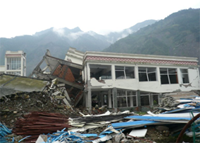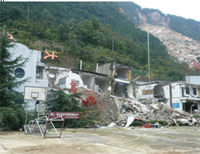The 14th World Conference on Earthquake Engineering – Innovation, Practice, Safety

- © UNESCO/T. Imamura
- UNESCO Exhibition at 14WCEE
Latest results on earthquake hazard mitigation and to exchange ideas on how to improve earthquake safety around the world were discussed during the meeting held in Beijing, China (12 - 17 October 2008).
During the 14WCEE sessions, extensive discussions were held on themes such as seismic codes and standards, earthquake disaster mitigation on non-engineered houses, tsunami, lessons learned from the Wenchuan earthquake. In addition to participating in those sessions, UNESCO organized some ad hoc meetings during the Conference. With the China Earthquake Administration (CEA), which has been associated with the UNESCO programme for Reducing Earthquake Losses in South Asia Region (RELSAR) over the past years, further collaborative activities in the coming years were discussed. A meeting with some members of the International Platform for Reducing Earthquake Disaster (IPRED) was also held for the purpose of following up the 1st session of the IPRED held in July this year. In order to move forward the action plans, the participated IPRED members agreed to develop an international database to contribute to post-earthquake field investigations by next spring.

The Conference brought together more than 2,800 government officials, NGO representatives, international research and development communities, scholars, and numerous segments of the private industries to present their latest results on earthquake hazard mitigation and to exchange ideas on how to improve earthquake safety around the world.
After the 14WCEE, the post-conference field discussions were held in the Sichuan Province, where the devastating earthquake disaster occurred on 12 May, 2008. The strongly damaged areas such as Yingxiu, Bailu, Hanwang and Beichuan were still covered by debris of collapsed buildings including schools. Many survivors were living in makeshift housing near by. As the buildings of key industry were totally damaged, thousands of people had lost their jobs. The participants discussed the reconstruction process with the local authorities.

The Beichuan county, the most devastated area by the earthquake and landslides, was now covered by 3-meter thick of rocks, stones, and mud due to the mudflow which occurred in September 2008.
- Source:UNESCO SC
- 24-10-2008
- © UNESCO/T. Imamura - Collapsed junior high school buildings in Yingxiu
- © UNESCO/T. Imamura - Collapsed elementary school buildings in Beichuan

